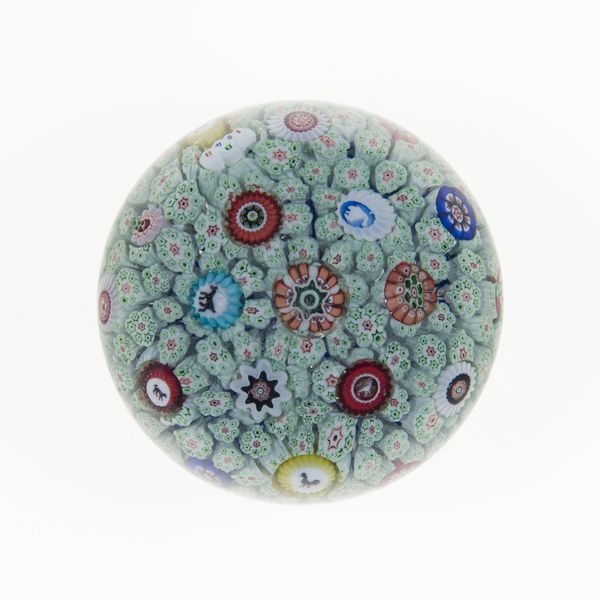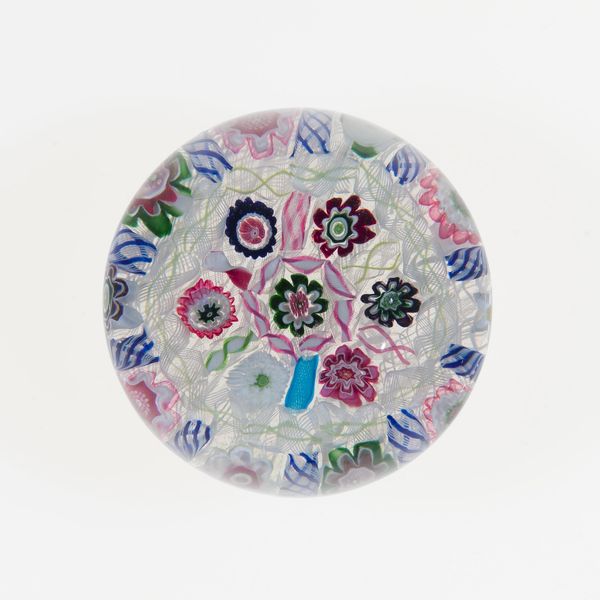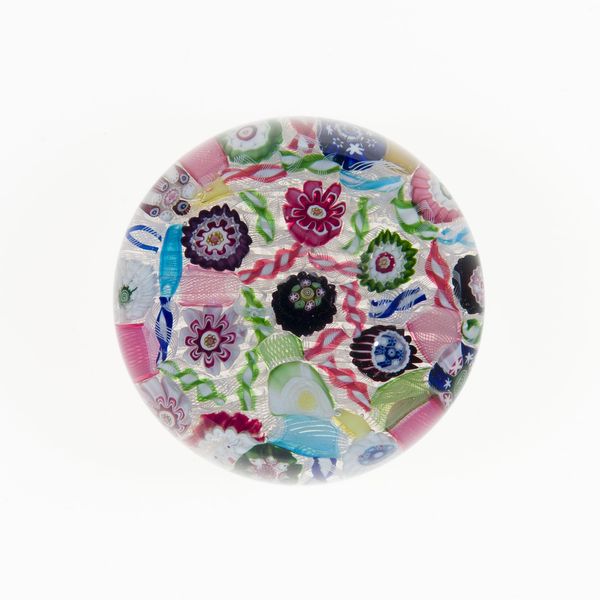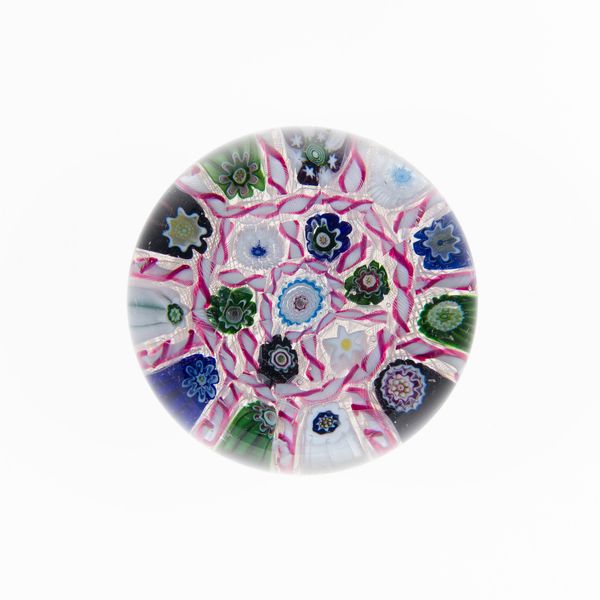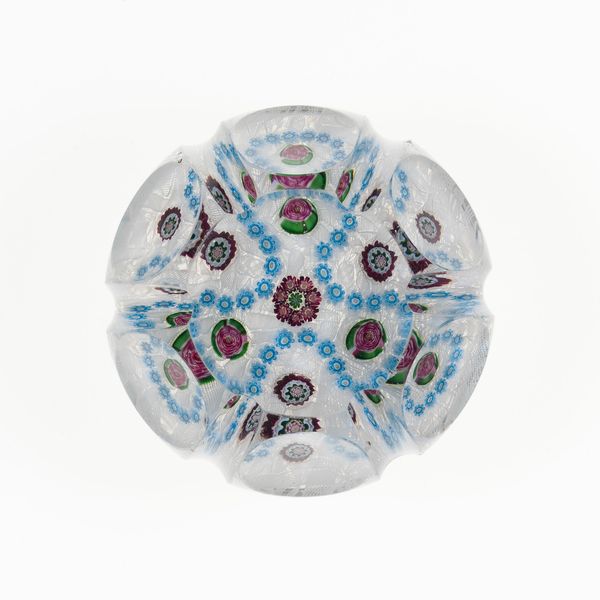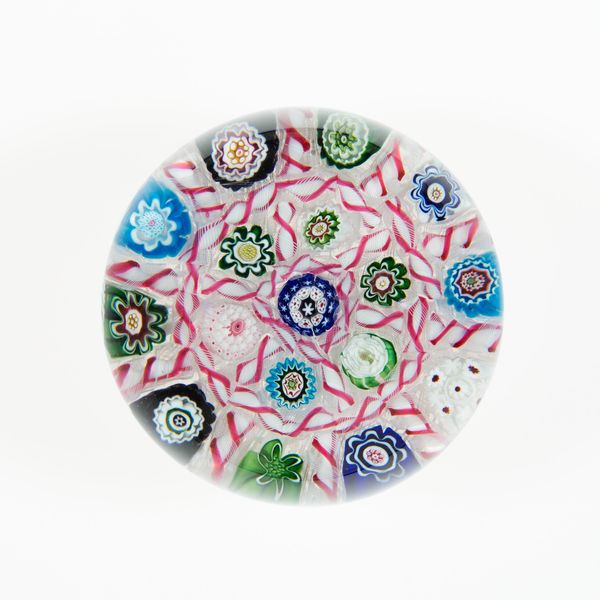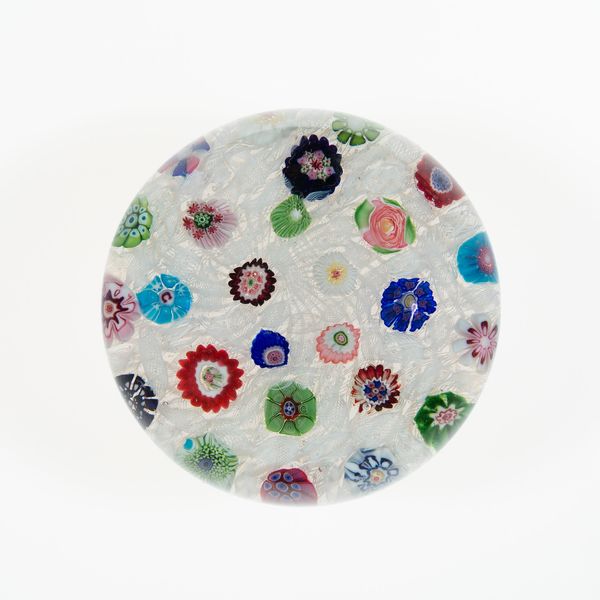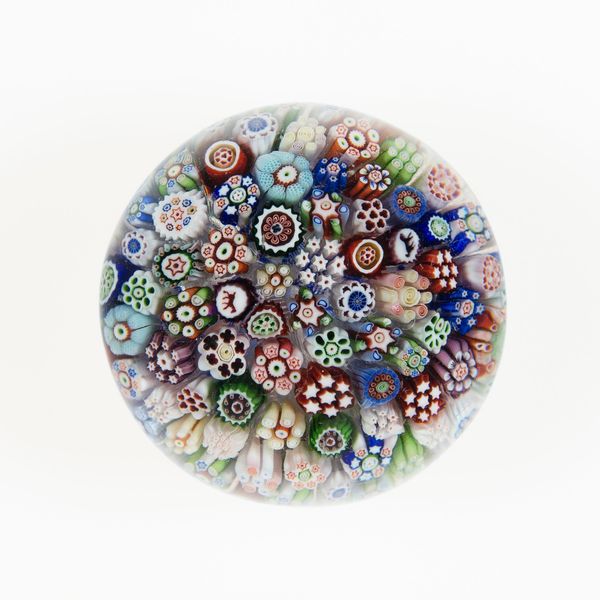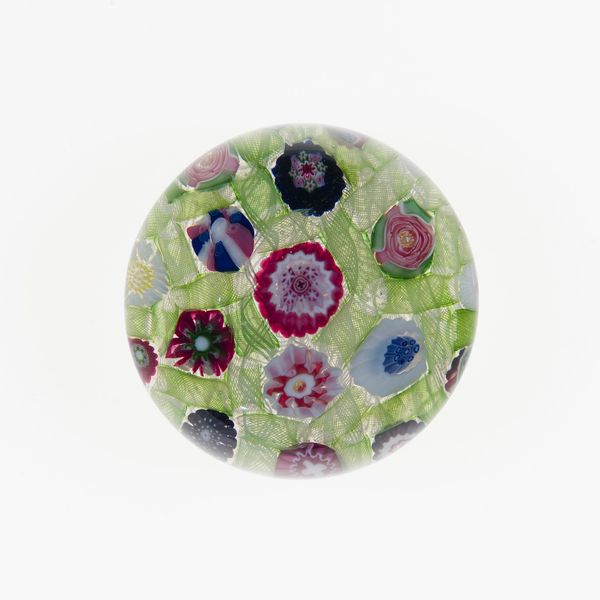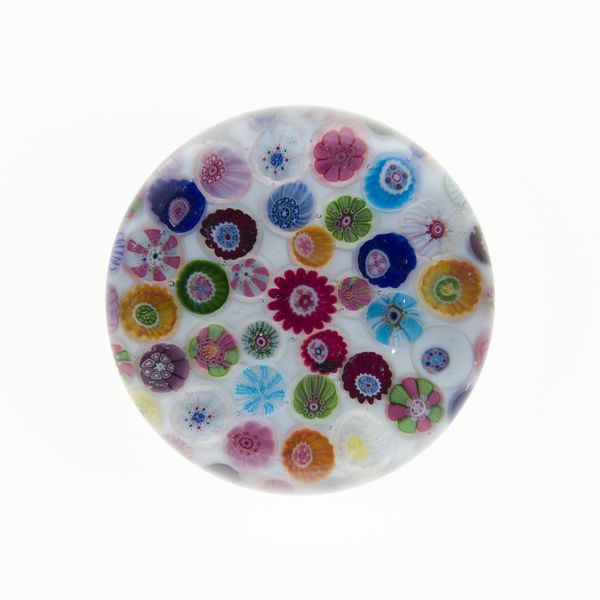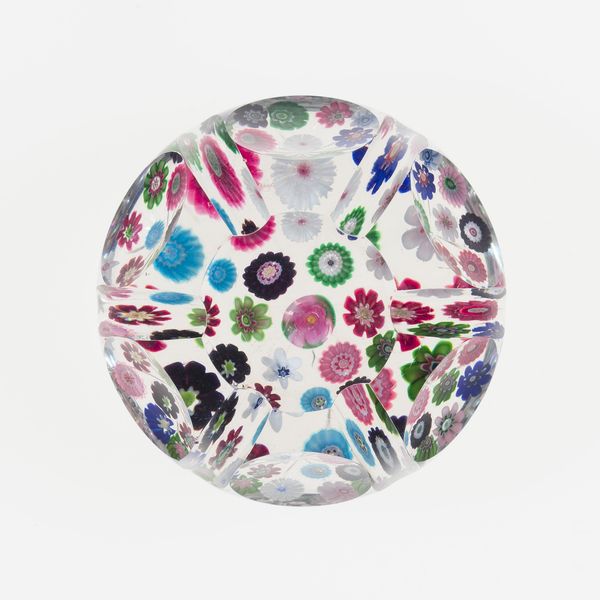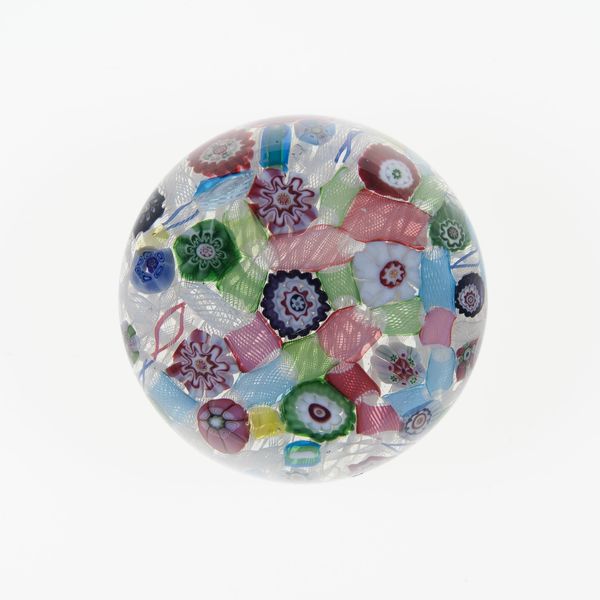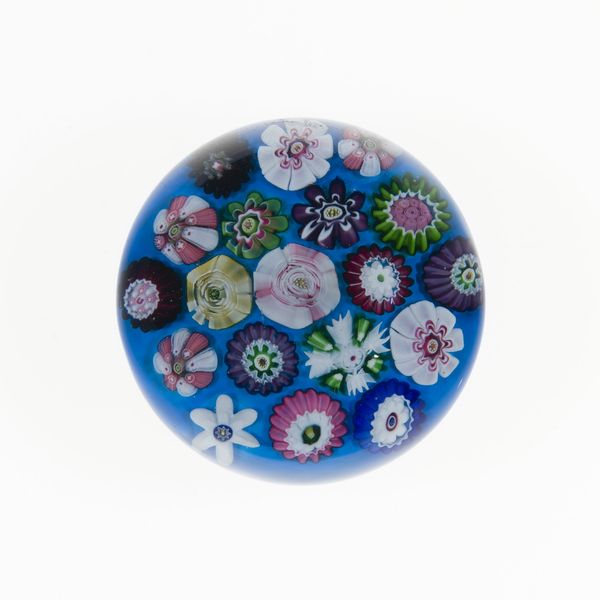
paper, glass
#
product photograph merchandise
#
product studio photography
#
circular oval feature
#
decorative element
#
cake food
#
circular organic
#
round design
#
bright focal point
#
paper
#
glass
#
white focal point
#
round circular shape
#
decorative-art
Dimensions: Diam. 7.2 cm (2 7/8 in.)
Copyright: Public Domain
Editor: This is "Paperweight," created by the Clichy Glasshouse around the 19th century. It's made of glass, of course. I’m really drawn to the detail in this tiny floral arrangement encased in glass. How would you interpret this decorative piece in terms of its history? Curator: Well, such objects gained immense popularity in the 19th century, coinciding with rising industrialization. They represented a shift in decorative arts, becoming accessible status symbols for the burgeoning middle class. Mass production allowed for intricate designs like this millefiori pattern—Italian for "thousand flowers"—to be replicated and widely distributed, moving decorative art out of elite circles and into everyday homes. It’s fascinating to think about how such an object, meant for the desk, became a reflection of social aspiration. Editor: That makes sense. It's almost like a flattened-out miniature bouquet captured forever. It makes me think of other ways to create art such as pressing flowers for later art applications. Were paperweights a form of resistance to traditional, elitist art? Curator: I wouldn't frame it necessarily as "resistance." But certainly, they offered a democratization of access to decorative refinement. Think about it: Prior to industrial advancements, intricate glassware was a signifier of significant wealth. These paperweights, while still luxury items, became comparatively affordable, shifting the landscape of taste. The artistry in them—the precise arrangement of glass canes, the play of light—made luxury more attainable and influenced tastes. Did this affect traditional high art? What’s your opinion on that? Editor: Possibly! I guess they helped pave the way for the Arts and Crafts movement in England and even Art Nouveau. You know, looking at this again, it’s like owning your own small garden! Curator: Precisely! So next time we glance at an seemingly 'minor' art object like this, let's remember it may symbolize how industrialization transformed culture. Editor: It really changed my understanding by highlighting that these glass paperweights reshaped how art reached society and individual taste!
Comments
No comments
Be the first to comment and join the conversation on the ultimate creative platform.
